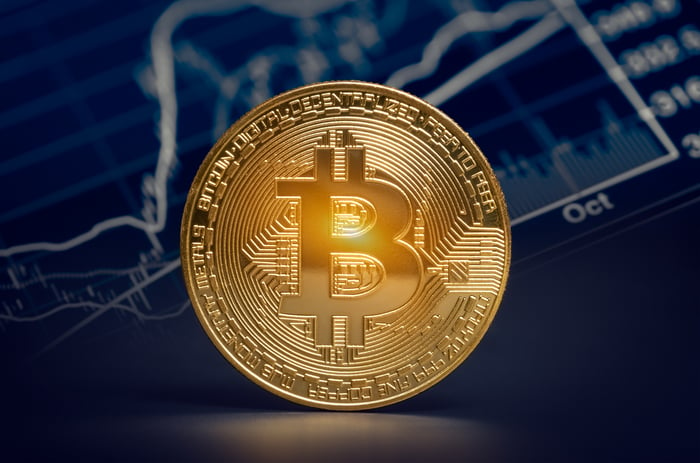There's a good reason why Bitcoin (BTC -0.70%) has earned a reputation as a tremendously volatile asset. It typically moves in dramatic boom-and-bust cycles, sometimes without any apparent rhyme or reason. After a huge "bust" year in 2022, when it lost 65% of its value, Bitcoin has entered a new "boom" phase and is up more than 110% for the year.
What makes this year's boom so remarkable is that it is not being driven by retail investors. Instead, the driving catalyst for this year's rally appears to be large institutional investors, many of whom are embracing Bitcoin for the first time. And that is leading to some tremendously bullish predictions about where Bitcoin could be headed next, including a potential rally back to its all-time high of $69,000.
Signs of institutional investor bullishness
The signs of a dramatic change in investor sentiment are everywhere these days. Wall Street giant Morgan Stanley recently opined that "crypto winter" could finally be over. A top market strategist at Fidelity Investments recently outlined a new investment thesis calling Bitcoin "exponential gold." Even some top hedge fund managers, who never before invested in crypto, are now waxing poetic about the allure of Bitcoin. Legendary billionaire Stanley Druckenmiller, for example, recently said in a Robinhood Fireside Chat, "I don't own any Bitcoin, to be frank, but I should."
What's driving the new enthusiasm for Bitcoin?
There are at least three good reasons for the change in sentiment. The most obvious one is the enthusiasm over the imminent arrival of the first-ever spot Bitcoin exchange-traded fund (ETF). When this product launches, it could result in a tsunami of new money into Bitcoin. Some of the largest institutional investors -- including BlackRock (BLK 0.69%), the largest asset manager in the world -- are behind this surge in new interest in Bitcoin. The conventional wisdom is that even if large institutional investors allocate just 1% of their portfolios to Bitcoin, then it could push up its price significantly.

Image source: Getty Images.
The other big reason for the change in sentiment is the overall macroeconomic outlook. Institutional investors are always on the lookout for a hedge against bad things happening in the broader economy, and have settled on Bitcoin as a potential hedge. Bitcoin has been widely touted as a potential hedge against inflation, which is what has earned it the moniker of "digital gold." And earlier this year, the string of regional bank failures led to many institutional investors moving their money into Bitcoin, all in the hopes of avoiding the pain and upheaval happening in the traditional banking system.
And, finally, there's building excitement over the Bitcoin halving in April 2024. This unique event, which happens only once every four years, results in the mining reward for Bitcoin miners being cut by one-half. This might sound like a highly technical event, but it has rather profound implications for the future price of Bitcoin. It makes Bitcoin a more deflationary asset (by reducing the rate at which new Bitcoin is being created), and it creates a "scarcity effect" around Bitcoin. In three previous halving cycles, Bitcoin has rallied to new all-time highs, and the expectation is for a similar outcome in 2024.
So what could go wrong?
Given all of the above, it might seem obvious that Bitcoin has nowhere to go but up. But don't forget: Bitcoin is a highly volatile asset. Put another way, Bitcoin is unlikely to march upward in any kind of obvious pattern. There will be zigs and zags along the way. Some analysts predict that Bitcoin might drop back to $25,000 or even $20,000 from its current level of $35,000. And, when you add in macroeconomic and geopolitical uncertainty, Bitcoin could end up disappointing a lot of bulls over the next 12 months.
That being said, I remain bullish on Bitcoin over the long haul. The arrival of institutional investors to the Bitcoin party is long overdue, and should continue to push up the price of the world's most valuable cryptocurrency for years, if not decades, to come.





